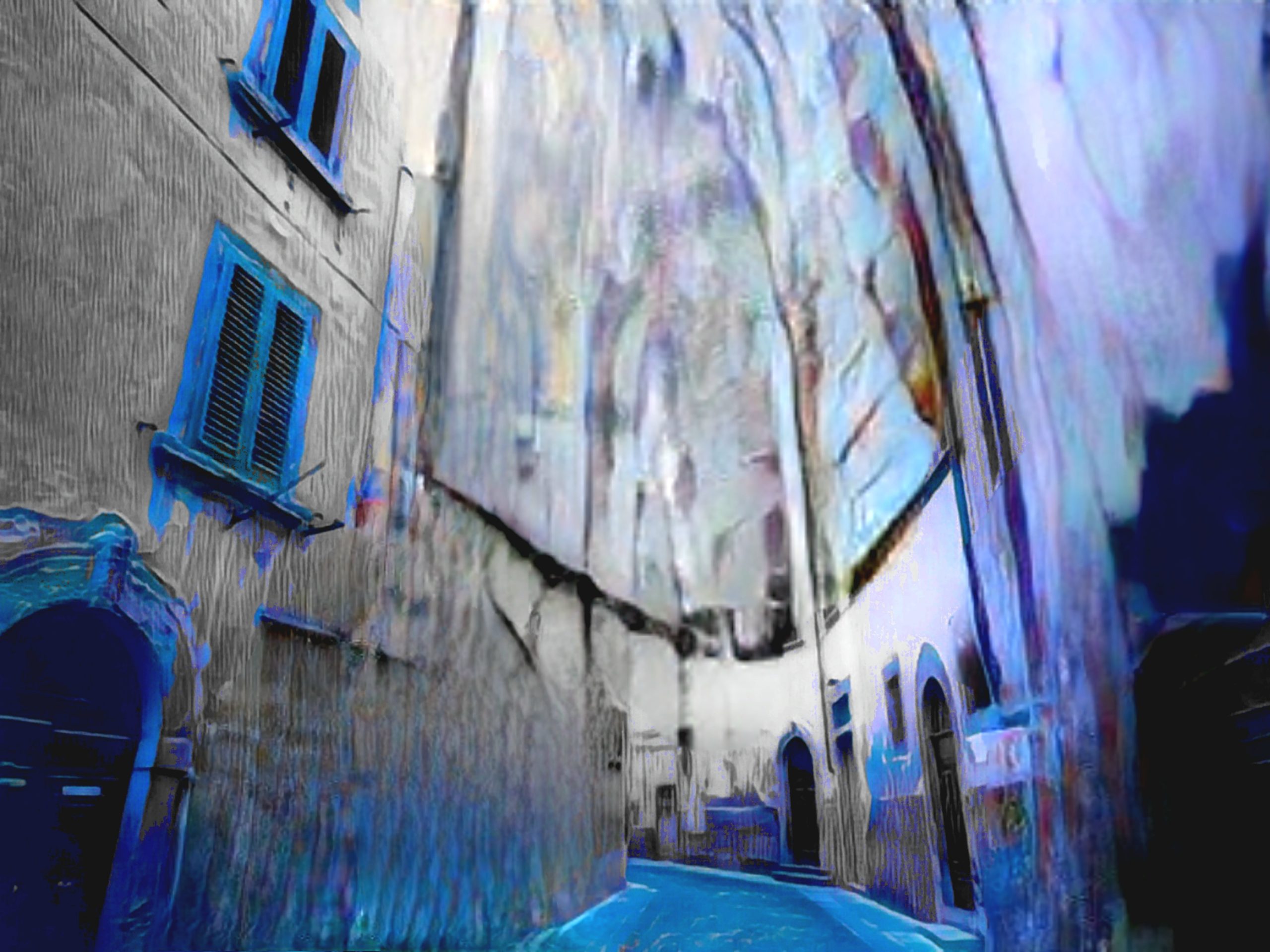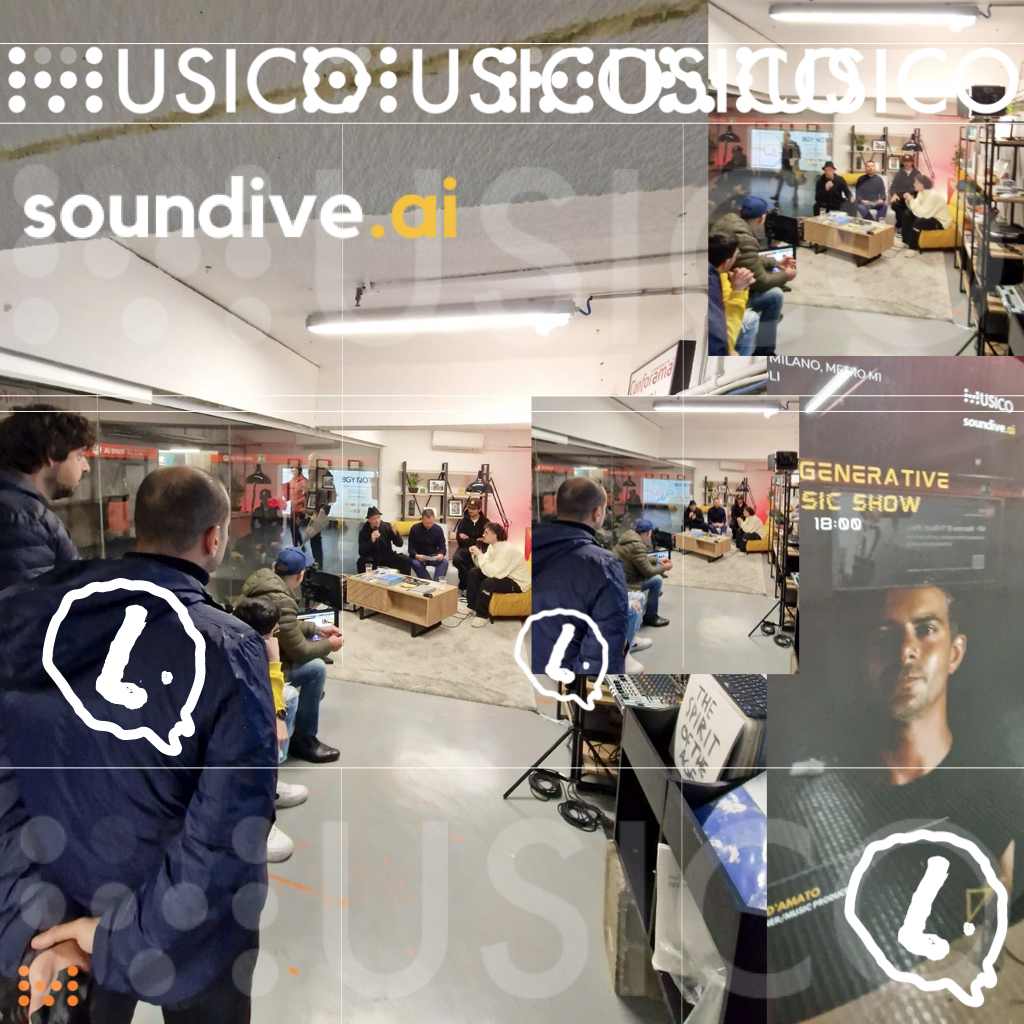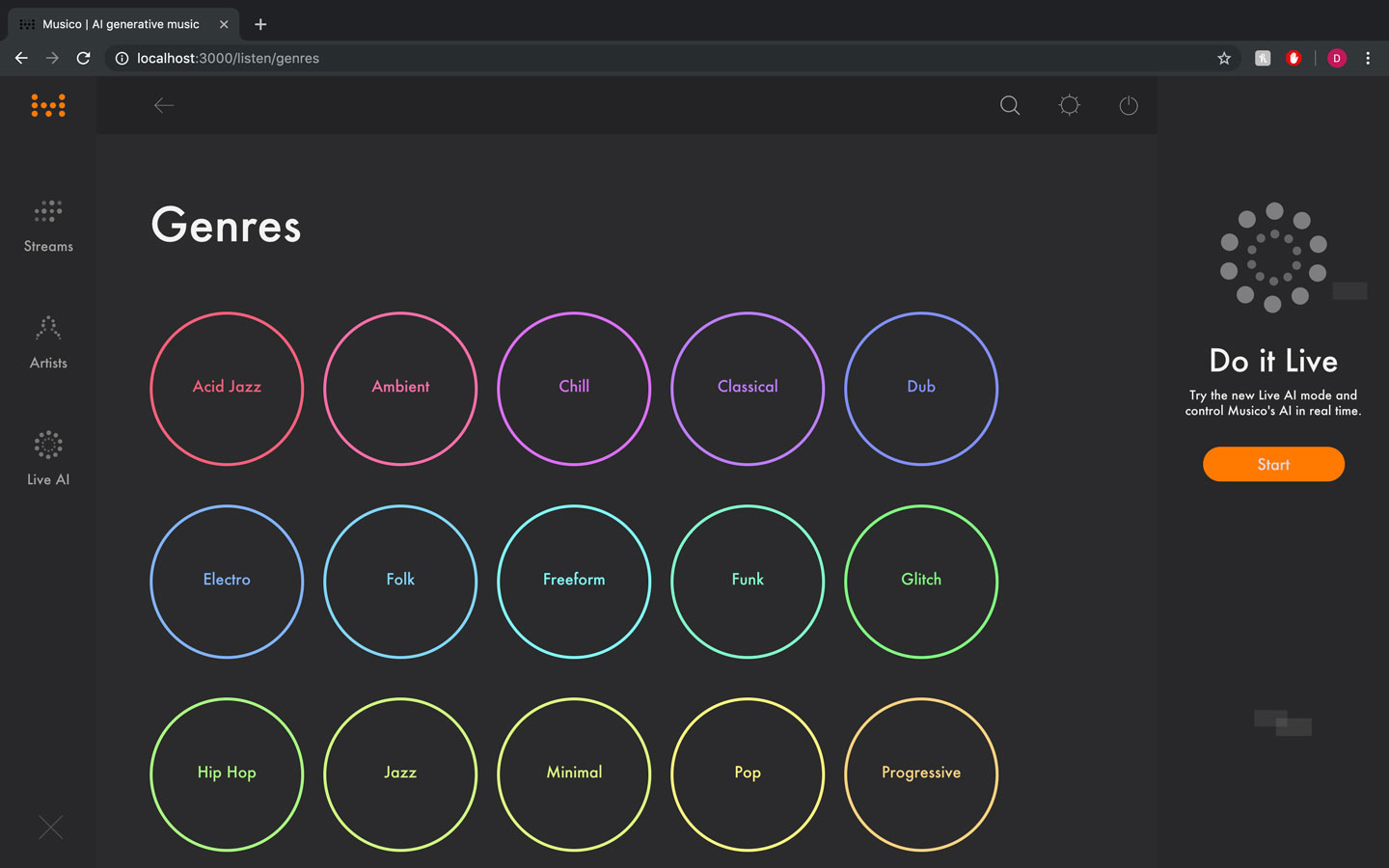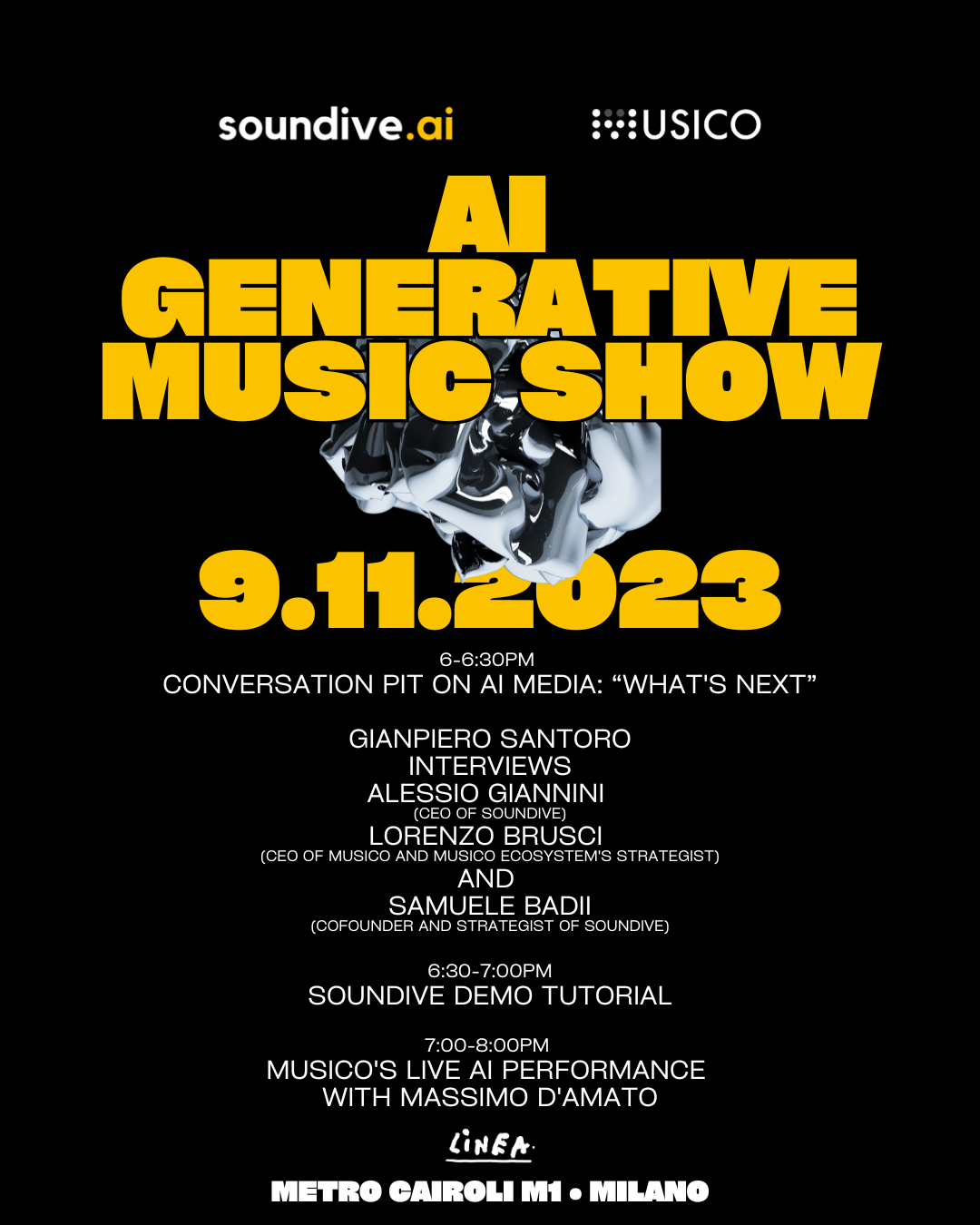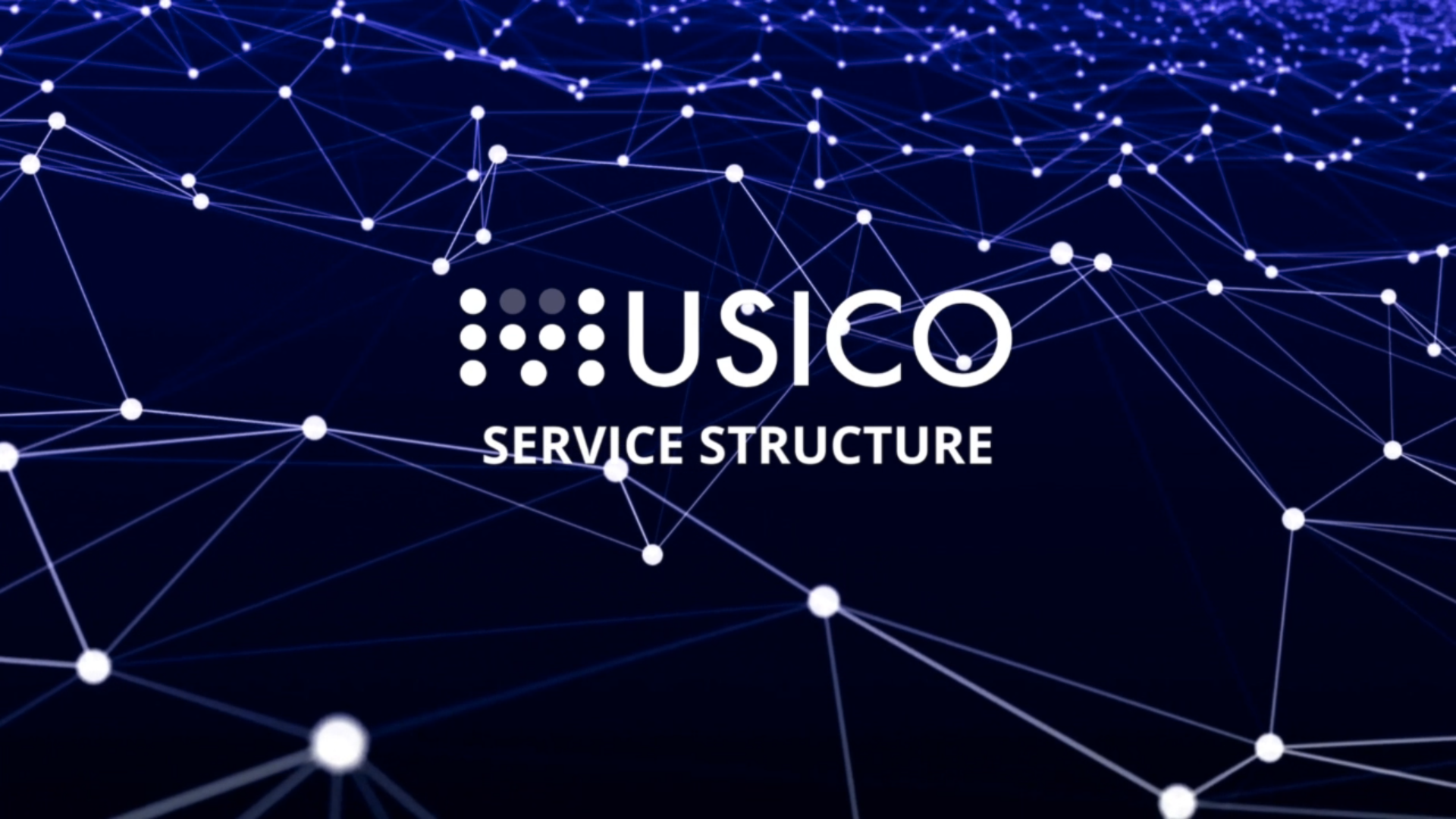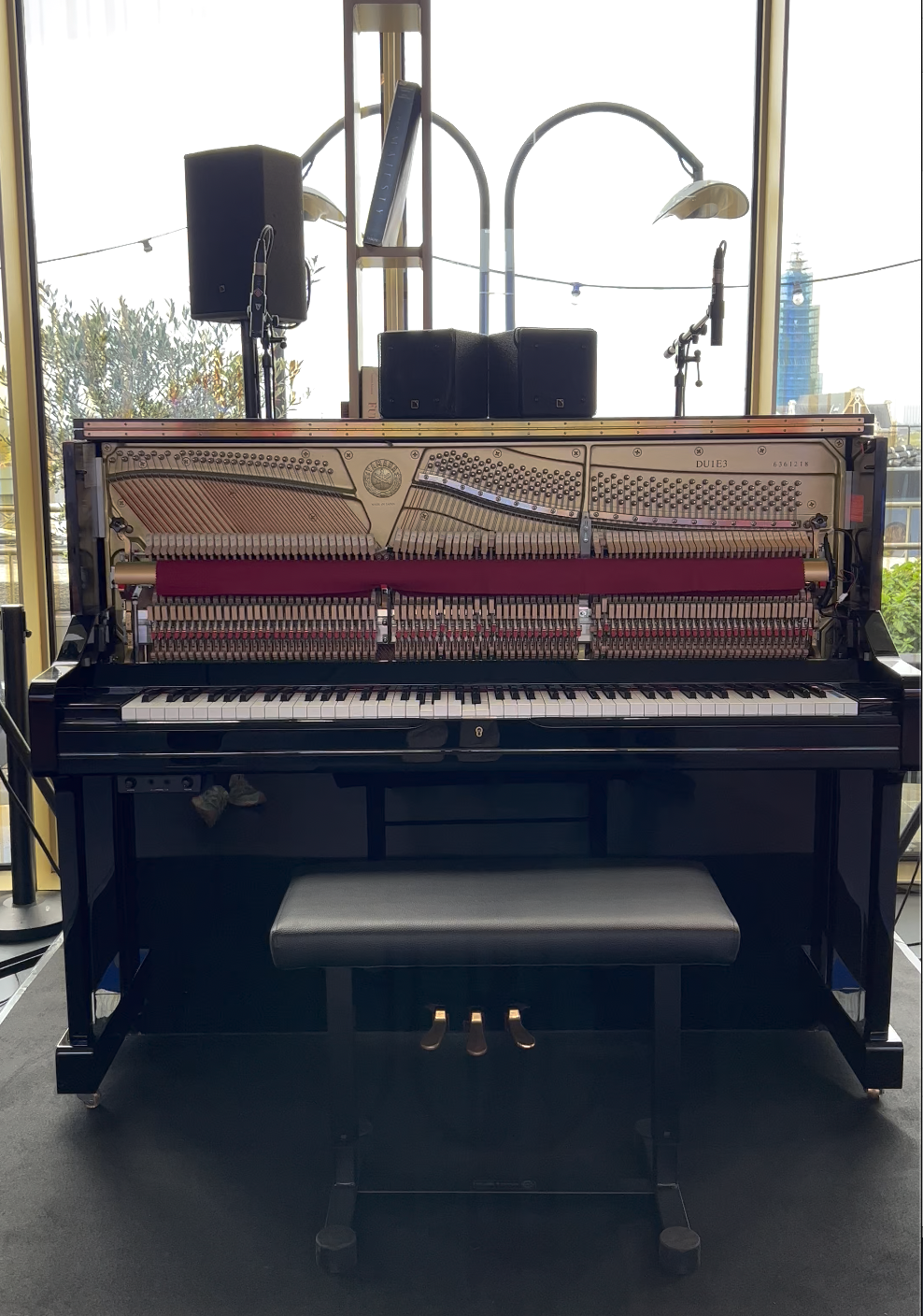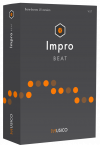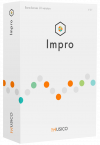The approach of MUSICO focusing on #handmade #ai utilizing original MIDI MUSIC datasets (human composers design them), and providing users #granular #control over cross-ontological automated functions as in our #videotomusic services – video analysis and “Semantic” Classification TO MUSICO’s generative music –presents a #specialized #tailored solution for creating music that is in #sync with video prompted contents and maintain a high unique – personal – expression rate. This method leverages the logical and “semantic”/”dramaturgical” features of videos (such as colors, brightness, cuts, objects and human presence and distribution over time and inside single frames, etc.) to produce music that closely aligns with the visual narrative. Comparing this approach to the more generalized scraping and application of large language models (LLMs) in content generation reveals distinct advantages and disadvantages: Advantages of Musi-co.com’s Approach Disadvantages Compared to Generalist LLMs MUSICO‘s approach to synchronizing generative music with video content using handmade AI, integration methodologies, and detailed video analysis offers significant advantages in terms of customization, semantic alignment, and musical quality. However, these benefits come often at the cost of scalability, resource intensity, and the flexibility to adapt to tasks beyond the system’s specialized domain. The choice between such a specialized approach and more generalist LLMs will depend on the specific needs, goals, and constraints of the project or organization in question, balancing the desire for high-quality, tailored outputs against the need for scalability, adaptability, and efficiency. The integration of both approaches, may be of the highest urgency and potential But there’s more. Musico’s generation never infringes past and future IP! Crucial, right? Ensuring that generative processes do not infringe on past and future intellectual property (IP) is crucial, especially in creative fields like music and video production. The approach of Musi-co.com, focusing on “handmade AI” and leveraging MIDI datasets with granular control over cross-ontological automated functions for video analysis to music generation, has several aspects that help in respecting and safeguarding IP rights: IP Challenges in AI-Generated Content Despite these advantages, it’s important to recognize the broader challenges AI-generated content presents to traditional IP frameworks: First Conclusion Musi-co.com’s approach to music generation aligns with the crucial goal of avoiding IP infringement by focusing on the creation of original content, tailored to specific video features. However, the evolving nature of AI-generated content and copyright law means that vigilance and proactive measures are essential to navigate IP considerations effectively. This underscores the importance of legal and ethical frameworks evolving alongside technological advancements to ensure creativity and innovation can flourish without infringing on IP rights. Musi-co.com’s approach, emphasizing the generation of original music (owned Data IP) tailored to specific input content and allowing for granular control over the creative process, indeed lays a foundation for future innovation and the enhancement of generated music by human artists. This model respects intellectual property (IP) rights and fosters a collaborative environment between AI-generated content and human creativity, where humans can augment or modify AI-generated compositions and potentially claim authorship of the derivative works, provided their contributions meet the criteria for originality and novelty. Here are key aspects of this approach in the context of IP rights and future innovation: Encouraging Human-AI Collaboration Ensuring Novelty and Protecting IP Challenges and Considerations MUSICO’s goal is to guarantee derived author-rights, fostering a culture of innovation that values both human creativity and technological advancement. This model represents a forward-thinking approach to the integration of AI in creative domains, balancing the need for copyright protection with the imperative for innovation. The ability to measure the mathematical or statistical aesthetic distance between training datasets and AI generations, including any human alterations introduced into these generations, presents a sophisticated method for understanding and innovating within the realm of AI-generated content. When applied to platforms like MUSICO, which involves music generation, this capability offers several significant advantages, impacting not just the immediate output but also the evolution of the dataset and the generative models themselves, together with possible business models. Here are key advantages: 1. Enhanced Creativity and Innovation Objective Basis for Creativity: By quantifying aesthetic distances, AI systems can identify and explore novel creative territories that have not been covered by existing datasets or previous generations. This opens up new possibilities for creativity that are grounded in an objective assessment of novelty. Guided Human Creativity: For human artists, these measurements can serve as a guide to push the boundaries of conventional aesthetics, encouraging more deliberate and innovative alterations that contribute to the richness of the creative output. 2. Improved Model Training and Evolution Targeted Dataset Expansion: Understanding the aesthetic gaps between AI outputs and the training dataset allows for targeted expansion of the dataset with new elements that fill these gaps. This can lead to a more comprehensive and diverse training set, enhancing the model’s ability to generate varied and innovative outputs. Feedback Loop for Model Refinement: The aesthetic distance can also serve as a feedback mechanism for refining AI models. By identifying areas where the model underperforms or lacks diversity, developers can adjust model parameters or training processes to achieve better results. 3. Quality and Diversity of Output Balanced Diversity: Measuring aesthetic distance helps ensure that the diversity in AI-generated content is not just random but is balanced and directed towards areas of potential innovation and interest. Quality Control: This approach can also serve as a quality control mechanism, ensuring that AI-generated content meets certain aesthetic standards or fits within desired parameters, which is crucial for applications in art, design, and entertainment. 4. Intellectual Property and Originality Originality Verification: In contexts where intellectual property concerns are paramount, the ability to measure how far an AI-generated piece deviates from existing works can help in asserting the originality and copyrightability of AI creations. Contribution Assessment: For human alterations, quantifying aesthetic distance provides a clear metric to assess the significance of contributions, which can be important for determining authorship and ownership rights. 5. Educational and Analytical Applications Learning and Teaching Tool: For educational purposes, these measurements can help students and practitioners understand the nuances of creative differences
Welcome to HAICU – Human and AI Compose United – a music label for AI-assisted musicians
Introducing a pioneering music label HAICU A New Era of Music Collaboration We @MUSICO are thrilled to announce an open call for visionary human composers. We invite composers and media creators to explore and contribute to the evolving landscape of music through our cutting-edge AI composition tools. Our Proposal: Innovative Access to our Generative Ai Tools and UX: Utilize MUSI-CO’s AI tools to receive generative audio or MIDI streams directly into your DAW (Digital Audio Workstation). This integration offers a seamless workflow for creative exploration and composition. Spectrum of Novelty: We encourage you to express your artistic vision across a spectrum of novelty – from diversely nuanced sound design to radical re-imaginations of AI-generated music structures. Collaborative Composition: Engage in a unique compositional dialogue where human creativity meets AI efficiency. Elevate the generative music with your personal touch, redefining what’s possible in musical artistry. Economic and Intellectual Partnership:Measured Novel IP: Your contributions will be recognized with an innovative intellectual property (IP) model. We quantify the level of novelty you introduce to the AI-generated material, ensuring fair and transparent IP rights allocation. Economic Incentives: As a participant, you’ll benefit economically from this collaboration. The profit-sharing model is designed to be equitable, reflecting the value of your creative input – highly unbalanced in favour of human composers. Methodological and Social Impact: This initiative serves a dual purpose – advancing our understanding of AI-human creative synergy and ensuring that the benefits of AI acceleration extend to the entire community of music creators and enthusiasts. Join the Revolution:Be part of this massive socio-technological revolution in the music industry. Your participation not only contributes to the artistic landscape but also shapes the future of AI in music and media composition. Let’s redefine music creation together. contact us at info@musi-co.com
Musico and Soundive united present: the Generative Ai Show [the Music chapter]
Milano, 9.11.2023, @Linea Live Ai Show: a matter of new Human/Machine Interaction strategies in the field of media and instant media creation Lorenzo Brusci:“…in fact the machine is prosthetic experimentation,it’s like it’s a body that has to happen, body mind “about-to-be-happening, articulating music, receiving and sending, sharing conditionings… being an extended body (…) If you could have a Morton Feldman or John Cage generator, and a Brazilian percussive music one… would you have ever explored these 2 worlds, without such a simplification (less mental and economic budget) and hyper-personal extended capacity? what is this acceleration? A real augmentation of your (human) expressive power, expressive possibility (…) Massimo D’amato: There has always been a vocation for experimentation, stretching beyond the standards, in this case of the DJ set… when I have more proposal, expanded panorama of choices, I am less constrained to determined music I’ve been listening to for years, and maybe repurposed even constrained to the main stream, possibility of discovering new elements (…) Lorenzo Brusci: here I wanted to provoke you, you are able to imagine a greater creative rate, less homologation, less repetition of form and standards, feeding on themselves…with this acceleration you can finally go into new territories! Massimo D’Amato: unfortunately the main stream, the reality of the fati… Lorenzo: Musico brings these tools of generative synthesis to the table, let’s see what happens at the meeting with human agents, and where they will take the musical discourse…. something is moving, there is already a growing interest from musicians (…)
Scraping rights, what’s the ethical future of Generative AI – if previous rights are not recognized?
past and future rights
MUSICO Ai-assistive technology music tools for a live Dj performance
[Musico @ LINEA will be testing an Ai-assistive technology music service for a live Dj performance] Let’s start daydreaming of_Simultaneous Generative Ai Music Streams_Delivered from the MUSICO Cloud Architecture_Conditioned by all kind of possible Input Parameters –as Music Styles or Instruments&Combos or Moods, able to set up and ignite the MUSIC streams, in Audio or Midi_letting the Performer Choose how to Alter, Mix, on his/her DAWand _eventually Generate/Remix/Metacompose #NewMusic Music performer and Live-Ai Dj, Massimo D’amatoEvent design: Simone Conforti, Lorenzo Brusci, Alessio Giannini/SOUNDIVE please, note: the music of the above video-teaser is generated without any additional editing action by the SOUNDIVE portal (!) #ai #liveai #generativeart #generativeaimedia #futureofai #musicindustry
Generative Ai and the Intellectual Property Law
article by Musico CRO Valentijn Borghuis and the MUSICO ecosystem Tech&Law strategist professor Emeritus Jan Smits (TUe) a quick brief of the article goals: “As machine learning techniques have matured, particularly since the watershed moment around 2012 involving the application of practical deep learning, we’ve witnessed a paradigm shift in content creation across various art forms—from music and visual arts to literature and more. Initially, these generative AI models served as advanced tools, enhancing the creative process for skilled artists who could navigate the complexities of the technology. However, the landscape is evolving, with AI becoming increasingly autonomous and user-friendly. Now, a simple click can generate a unique artistic creation. This democratization of art through AI is not just an exciting evolution; it’s a potential revolution. The technology has advanced to such an extent that its creations are not only viable but highly appealing for use in areas traditionally reserved for human-made art. It heralds a future where personalized, situation-specific art could be produced en masse. As venture capitalist Vinod Khosla has presciently noted, we may soon find ourselves surrounded by tailor-made creative works that resonate with our current emotional state. Yet, this rise of generative AI brings with it complex challenges, particularly concerning Intellectual Property Rights. Questions about authorship, originality, and the ethical implications of AI-generated content are at the forefront of both scholarly and legal discussions. This article aims to delve into these pressing issues, focusing primarily on the realm of generative AI in music and the specific technology and business case of MUSICO. The article will unpack the relevant technical jargon, examine the evolving concept of authorship in the context of AI, and explore the legal conundrums arising from this transformative technology. Ultimately, we’ll consider whether AI-generated art should be protected under existing IP laws or freely shared within the public domain”. A few comments on the state of the art, at 1 year from the article release. while relaunching the passionate and analytical excursus made by our partners, we would like to highlight a few methodological imminent implications: 1_if elaboration happens to an Ai generated media utterance 2_learning from history – the “hip hop” and “sample art” cases 1, MUSICO is able to measure the novelty of a music utterance derived by our generative systems: this implies the capacity to grant a Creativity ID to the utterance, and the following potential of stating a new IP for human creators;2, we learn from the Hip Hop and sample art history that sampling could have inspired a way far wider new musical compositional accelerated practices, and music linguistic landscape, interrupted instead by legal bonds tearing down the opportunities envisaged at first: in order to avoid this happening again with a unprecedented referential paranoia, we should be able to offer a measure for novelty that guarantees both the existing Ip holders, Ai companies and Human creators.Synthetic cycles always reopen the professional game, and this is what new generations of creators want to hear! Learning from the lessons of the past can allow us to make the current Ai revolution an amazing opportunities for previous rights-holders and present future creators. www.musi-co.com (MUSICA COMBINATORIA) designs tools and instruments to assist humans to make art, the generated art is or Public of owned by the users – if eligible and “measured&evaluated” as an individual who “made a difference with the algorithmic past”. further deepenings: The points We are raising touch upon some of the most dynamic and critical aspects of the current AI revolution in the creative arts, specifically in the field of music. We’re discussing a sophisticated interplay between technological innovation, artistic creation, and legal frameworks.
MUSICO Sales Claims for AI Generative Music and Cross-Media Automatic Services
_Media Input & IP Safety: Seamlessly upload any media for the Musico’s tech to sonify it, and rest easy with our IP infringement scanning and substitution strategies. We ensure your content is legally sound, once MUSICO’s tech – rights free generative Ai music – will compose its music! _Cross-Ontological Design: Our proprietary algorithms identify and understand diverse media types and their interconnected attributes for more coherent and integrated musical outcomes. _Customizable Musical Style: You choose the musical landscape (via a playlist of a representative number of songs, i.e. “Christmas music”)—be it genre, mood, or specific sound effects. We make it happen. _AI-Driven Music Generation: From simple playlists to complex musical datasets, we offer customized music generation that evolves in complexity and novelty based on your adaptive needs – the music datasets are designed by Musico’s team of human compsers – Handmade datasets in Musico’s total Ip control. _User-Friendly Interface: An intuitive UI that enables you to fine-tune your musical output, offering maximum control with minimum effort – see the Soundive.ai use case or the Musicfit case _Smart User Profiling: Our AI doesn’t just create music; it learns from your preferences for increasingly accurate and efficient recommendations and outputs. These sales claims aim to offer our clients an explicit understanding of what each service chapter can provide and suggest further services solving problems they face on their daily media design practices, conveyed in a straightforward and compelling manner. Reach us out and explore our services and delivery capacities!
Till soon ADE Festival!
And thanks to the CERCLE , MUSICO and Soundive teams for the combined and successful partnership! WATCH: LISTEN: Here is some more feeds from the AUTONOMOUS PIANO – ghost piano… robotic piano – Live Ai installation, to remember the generative quality achieved at the MUSICO installation, W Hotels Amsterdam, ADE Festival 2023. New Perspective in Media Performing Arts: Ai Driven assistive and interactive technologies W Amsterdam @cerclemusic @whotels @wamsterdam #whotels #wamsterdam
MUSICO for CERCLE @ADE Festival 2023
first prying glances at the MUSICO_for_CERCLE installation _ open to the public from October 19, 2023 W Amsterdam @cerclemusic @whotels @wamsterdam #whotels #wamsterdam :: see here an announcement by W Hotels :: W HOTELS AND CERCLE UNITE AT AMSTERDAM DANCE EVENT (ADE)
Musico for Cercle Music @ADE Festival Amsterdam, October 18-22, 2023
content: Generative Music Live Installation by MUSICO installation for CERCLE @ADE Festival 2023 Musico’s generative engine is Inspired by the music of composer and producer Parra For Cuva The Machine is a Cultural Tool, or better, the human body is the first machine, thus… Who is the ghost in the machine? The installation: a ghost piano situated at the lobby of an ultra-fine #WHotels In Amsterdam, is welcoming the guests of an amazing electronic music festival, playing as though possessed by an #Intertemporal Human Spirit. This ethereal, yet technological marvel is an embodiment of an highly stratified algorithmic genius. Set on a minimalist stage, the piano itself is a sight to immerge in, sleek, futuristic, and generous in its potential aura: the Lp, the Cd, are silent, before the Djs play them for their audiences. The mechanisms is there, a silent instrument, till the music spirit makes it alive. The keys dance under invisible fingers, but the virtuosity is very real, a blend of human ingenuity and machine efficiency – the ancient alliance, still here to surprise us and take us who knows where. Embedded within the piano are actuators and sensors orchestrated by a microcontroller, moving the keys as if a phantom virtuoso is at the helm. The music is not mere reproduction—it is generative creativity fueled by Ai algorithms and human-machine interaction strategies, designed by MUSICO’s machine learning team. The machine learning model has consumed a limited and specialised human-composed dataset of music inspired by composer Parra for Cuva, the EDM star selected by CERCLE MUSIC as the inspirer of this specific Musico’s Generative Ai process; Musico’s Ai has been assimilating elements of classical, jazz, and experimental genres, all wrapped up inside the compositional features distribution underpinnings the “Inspiring Original Playlist”: capturing not just the probable sequences of notes but the logical contexts that give to the original music strength and meaning. It discerns patterns, styles, and hidden rules that often play distracted roles in our operative music minds. What an alliance are we finally hosting! In real-time, the AI sifts through this epistemic framework of musical human knowledge. As festival-goers pause, captivated by the surreal experience, the machine learning algorithm generates limitsless MIDI compositions. The compositions are then translated into mechanical impulses that drive the piano keys, creating a live, ever-changing musical experience. More instruments are mixed in the piano performance, diffused by a dedicated sound system, making the natural polyphonic interplay the perfect context to sublimate the piano articulation; plus, no matter the uneasiness of the never ending generation, and despite the lack of objective human time for listening to this irrational amount of music, the experience seems provoking us to imagine an intensive life-like-music ahead of us, maybe aiming at sonifying alien worlds and unlimited space-journeys, physical of virtual they might be, or redefining our idea of silence (…). What emerges is a unique musical syntax—a sonic mosaic, intertwining algorithmic precision and human expressiveness. To a certain extent, It captures the zeitgeist of the festival, encapsulating the collective musical preferences and cultural nuances dictated by the event and its attendees. It defies the distinction between creator and instrument, between human and machine. Each note played resonates as a question about the nature of creativity, the limits of artificial intelligence, and the ever-blurring boundaries between man and machine, as all actors of the EDM world know very well, assisted on a daily basis by our digital audio workstations and all sort of digital production tools . A short sample of the generative music Musico will broadcast live at ADE In this coalescence of technology and art, the ghost piano serves as both a spectacle and a scientific inquiry. It probes the edges of what we consider possible in the realm of musical composition and performance, stretching our understanding of both. And as the last note lingers in the air, dissipating into the festival’s ambient virtous noise, one can’t help but wonder: Have we just witnessed a new form of artistic expression, or a scientific experiment that challenges our foundational beliefs about creativity and consciousness? For sure, the future of music interpretation goes more probably through thinking emotions and past music references, setting your actual life determine what the music destiny will be: the old-new a bridge between humans and all sort of creatures alike. In this scenario, there’s only space for beauty and diversity, space for anyone’s creativity, in a symbolic world where no one is left behind. “it’s natural to be artificial” The Soundive Experience there’s more: The #SOUNDIVE interactive experience Here ‘s a second Generative Ai experience offered by the MUSICO ecosystem for CERCLE: A MUSICO/Soundive experience gives the ADE audience the possibility to access directly the VIDEO-to-Music portal SOUNDIVE. Register at the QR code URL you will find on-site at the W Hotels and in the Cercle and MUSICO ecosystem media platforms; A #ADEFestival #mediasouvenir by #MUSICO #CERCLE #Soundive W Amsterdam The operative MUSICO team for the ADE festival: Dataset composition and design: Lorenzo Ballerini, Massimo D’Amato, Lapo Grossi, Andrea Perini Sound Design: Massimo D’Amato Ai Strategy: Alessandro Tibo Computer music design, project management, installation set up: Alberto Gatti, Simone Conforti, Lorenzo Brusci @cerclemusic @whotels @wamsterdam #whotels #wamsterdam
